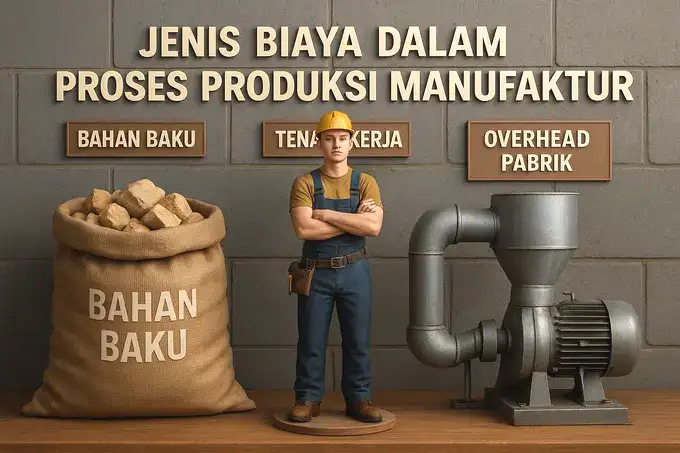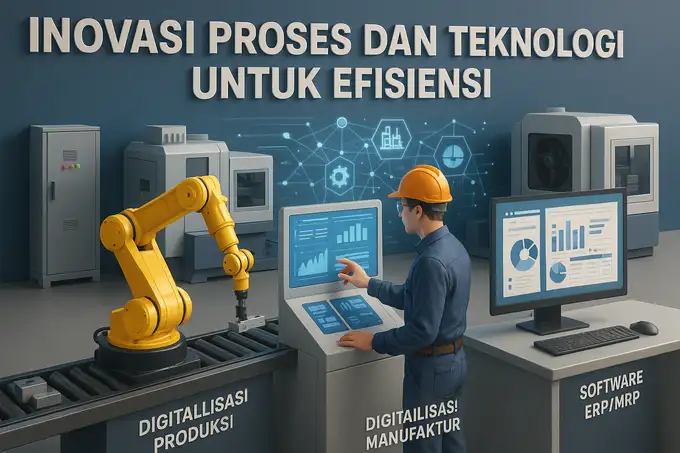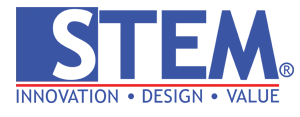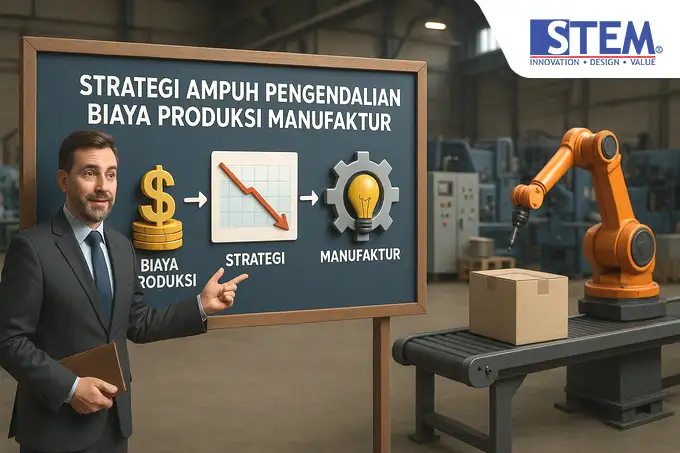In the fierce arena of industrial competition—where every single rupiah carries weight—the ability to control manufacturing production costs is no longer a luxury; it is an urgent necessity.
This article will be your trusted companion, guiding you through a series of strategies designed to lower production costs, enhance efficiency, and ensure your manufacturing business remains profitable and resilient, even amid the storm of competition.
We will speak of systems, methods, and mindsets. But more importantly—we will speak of the courage to reclaim control over processes that have too long drifted without direction.
Don’t let opportunities slip through your fingers. Implement SAP Business One from PT. Sterling Tulus Cemerlang to reorganize your production process—faster, more efficient, and more profitable.
Why Is Manufacturing Cost Control So Crucial?
Picture a small factory on the outskirts of a bustling city. Its machines hum tirelessly. Its workers move with purpose. And yet, each month ends with the same haunting question on the financial report: “Where did all the money go?”
The answer is simple, though painful—uncontrolled production costs have devoured the profit margin.
Cost control isn’t merely about recording figures. It is the art of business survival. In the manufacturing industry’s unforgiving race, the company that can produce at a lower cost without sacrificing quality will always emerge ahead.
Efficient cost management also paves the way for innovation. When the weight of expenses no longer constricts your every move, bold strategic decisions can be made. Here, cost control transcends importance—it becomes indispensable.
Understanding the Various Types of Costs in Manufacturing

To control something, one must first understand it. Manufacturing production costs typically fall into three main categories:
- Raw Material Costs: These are the physical resources transformed into finished goods. Fluctuating raw material prices can be either a curse or a blessing—depending on your degree of control.
- Direct Labor Costs: Wages paid to workers directly involved in the production process. Their productivity and efficiency play a pivotal role in cost management.
- Factory Overhead Costs: Electricity, water, machine maintenance, and support staff salaries. These hidden costs are often overlooked, yet they can drain resources silently.
In addition, there are fixed costs, which remain unchanged regardless of production volume, and variable costs, which rise and fall with production activity. Understanding these distinctions is vital for developing effective efficiency strategies.
Take command of your cost control efforts with SAP Business One from PT. Sterling Tulus Cemerlang — it’s time to act with intelligence and precision.
Smart Strategies for Managing Raw Material Costs
Ever felt like your raw materials vanished overnight, just after restocking? Or watched helplessly as prices surged? It’s time to think strategically:
- Negotiate with Suppliers: Don’t be a passive buyer. Secure long-term contracts, explore alternative vendors, or partner directly with primary producers or farmers.
- Just-In-Time Inventory Management (JIT): Reduce excess inventory that risks spoilage or obsolescence. Receive materials only as needed, and use them immediately.
- Minimize Waste and Scrap: Identify waste points in material cutting or production phases.
- Standardize Materials: Use common raw materials across different products to streamline procurement and maximize utilization.
These are practical and impactful strategies to reduce raw material costs.
Streamlining Direct Labor Costs with Precision
They are the hands that breathe life into your machines. But is every hour they work truly productive?
- Employee Training: Skilled workers complete tasks faster, more accurately, and with fewer errors.
- Efficient Scheduling: Avoid unnecessary overtime and eliminate idle time.
- Incentive Systems: Tie bonuses to efficiency and productivity—not just attendance.
- Partial Automation: Identify process points that can benefit from technology without replacing your workforce.
These strategies don’t just reduce labor costs—they elevate the workforce’s quality and morale.
Controlling Factory Overhead Costs with Finesse
There are hidden drains on your budget that go unnoticed—until the power fails or a machine breaks at the worst possible time.
- Energy Efficiency: Use LED lighting, shut down idle machines, and conduct regular energy audits.
- Preventive Machine Maintenance: Routine care is far cheaper than emergency repairs.
- Utility Cost Negotiation: Review electricity, water, and internet contracts—there’s often room to cut costs.
- Optimize Indirect Labor: Ensure support staff levels align with actual needs.
Mastering overhead cost control is an art—subtle, but critical.
Applying Lean Manufacturing to Eliminate Waste
“Every form of waste is a loss that can be prevented.”—this is the core tenet of Lean Manufacturing.
There are three major adversaries:
- Muda (Waste): Activities that do not add value.
- Mura (Inconsistency): Excessive variations in outputs.
- Muri (Overburden): Imbalanced workloads.
By identifying and eliminating these factors, a company can slash costs without compromising results. This is where the magic lies—efficiency without sacrifice.
Driving Efficiency Through Process Innovation and Technology

Technology isn’t about luxury—it’s about survival and growth.
- Production Automation: Robotics, conveyors, and sensors can handle repetitive and error-prone tasks.
- Digital Manufacturing: Real-time dashboards, automated reporting, and IoT integration.
- ERP/MRP Software: Centralized systems to manage production planning, material allocation, and cost tracking.
🌟 Leverage SAP Business One from PT. Sterling Tulus Cemerlang to unify all production, inventory, and financial processes in a single platform.
This ERP system has proven its value in helping numerous manufacturers boost efficiency and dramatically cut production costs.
Technology is not just a tool—it’s a new way of thinking for those bold enough to embrace it.
Cost Accounting Methods for Oversight and Insight
Ever heard of standard costing? Or cost variance analysis?
- Production Cost Budgeting: Plan ahead. Measure performance. Take action when things go off course.
- Standard Costing: Set ideal cost benchmarks, then compare them to actual outcomes.
- Variance Analysis: Why were raw materials pricier this month? Why did labor hours increase?
These are the techniques of industry giants—and they are at your disposal, too.
The Vital Role of Cost Performance Measurement
What you don’t measure, you can’t improve.
- Production Cost KPIs: Cost per unit, reject rate, machine utilization ratio—all provide valuable insights.
- Performance Dashboards: Visual displays for quick, clear comprehension.
- Routine Evaluations: Monthly, weekly, or even daily reviews.
With manufacturing performance metrics, every data point tells a story—and from that story, you chart your course forward.
Common Challenges in Cost Control and How to Overcome Them
It’s not easy. Obstacles are inevitable.
- Resistance to Change: Involve teams early, listen to concerns, and clearly communicate the benefits.
- Inaccurate Data: Invest in reliable recording systems—data is the lifeblood of efficiency.
- Lack of Management Commitment: Leadership must lead by example. Without top-down support, change cannot endure.
The ultimate key? One word: consistency.
Conclusion
Manufacturing cost control strategies are not one-time initiatives—they are ongoing journeys. They are the path to becoming a leaner, more agile, and future-ready company.
In a world that constantly shifts, you can’t control everything.
But you can always control your costs.
So, are you ready to take the reins once more?
💬 Connect with our consultants today for a free demo and tailored business consultation: www.sterling-team.com


